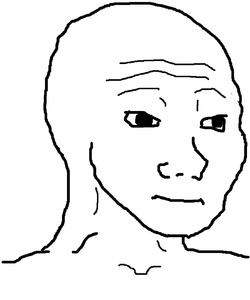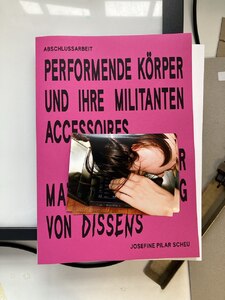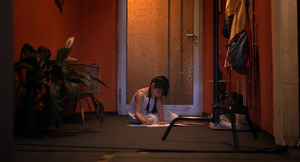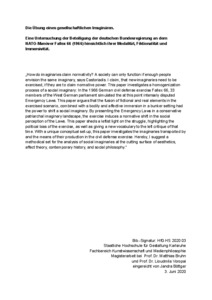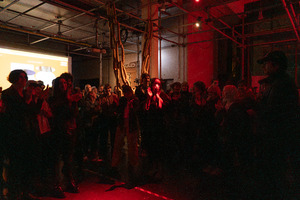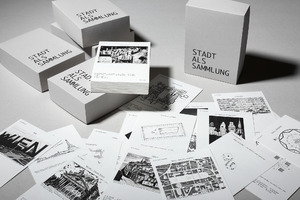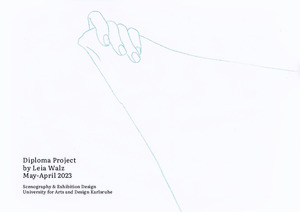Matthias Bruhn
| Name | Matthias Bruhn |
| Verzeichnis(se) |
|
15 Inhalte
- Seite 1 von 2
Stella Kramrisch. Kunsthistorikerin zwischen Europa und Indien.
- Titel
- Stella Kramrisch. Kunsthistorikerin zwischen Europa und Indien.
- Untertitel
- Ein Beitrag zur Depatriarchalisierung der Kunstgeschichte
- Autor/in
- Beschreibung (de)
- Warum gab es keine bedeutenden Kunsthistorikerinnen? Das Buch „Stella Kramrisch“ sucht in der Kunstgeschichtsschreibung der letzten Jahrzehnte nach einer Antwort auf diese polemische Frage. Die Erklärung für das Fehlen von Kunsthistorikerinnen findet sich in den misogynen und patriarchalen Strukturen der Geschichtsschreibung. Um die Reproduktion ebendieser Strukturen zu unterbrechen, ist das Buch dem Werk und Wirken der Kunsthistorikerin Stella Kramrisch (1896 –1993) gewidmet.
Stella Kramrisch war in den 1920er bis 1940er Jahren eine gefragte Expertin für indische Kunst. Aufgewachsen und promoviert in Wien, lehrte sie ab den frühen 1920er Jahren an Universitäten in Bengalen. Sie argumentierte für die Eigenständigkeit des künstlerischen Wertes indischer Architektur, Skulptur und Malerei. Während ihrer Zeit in Bengalen verbreitete sie ihre Thesen durch wirkungsmächtige Ausstellungen und Publikationen in Europa. Möglich war das durch die Zusammenarbeit mit Institutionen wie dem Wiener Institut für Kunstgeschichte, Springers Handbuch Kunstgeschichte, der Reformbewegung und dem Warburg Institut. Warum wissen wir nichts von dieser Tänzerin zwischen Kulturen, der scharfen Beobachterin und poetisch präzisen Autorin? Das Buch zielt auf die Erschließung des Werkes, der Methoden und des Kunstbegriffs von Kramrisch ab.
- Warum gab es keine bedeutenden Kunsthistorikerinnen? Das Buch „Stella Kramrisch“ sucht in der Kunstgeschichtsschreibung der letzten Jahrzehnte nach einer Antwort auf diese polemische Frage. Die Erklärung für das Fehlen von Kunsthistorikerinnen findet sich in den misogynen und patriarchalen Strukturen der Geschichtsschreibung. Um die Reproduktion ebendieser Strukturen zu unterbrechen, ist das Buch dem Werk und Wirken der Kunsthistorikerin Stella Kramrisch (1896 –1993) gewidmet.
- Beschreibung (en)
- Why were there no great women art historians? The book “Stella Kramrisch” seeks an answer to this polemical question in the art historiography of the last few decades. The explanation for the absence of women art historians is found in the misogynistic and patriarchal structures of much history writing. To interrupt the reproduction of these very structures, the book focuses on the work and activities of the art historian Stella Kramrisch (1896-1993).
In Europe, Stella Kramrisch was a sought-after expert on Indian art from the 1920s to the 1940s. Raised and graduated in Vienna, she taught at universities in Bengal from the early 1920s. Central to her research was the argument for the autonomy of the artistic value of Indian architecture, sculpture, and painting. During her time in Bengal, she spread her theses through influential exhibitions and publications in Europe. This became possible through collaborations with institutions such as the Vienna Institute for Art History, Springer’s Handbook of Art History, the Reform Movement, and the Warburg Institute. Why do we know nothing of this dancer between cultures, a keen observer and poetically precise writer? The book aims to make Kramrisch’s works, methods, and concept of art accessible.
- Why were there no great women art historians? The book “Stella Kramrisch” seeks an answer to this polemical question in the art historiography of the last few decades. The explanation for the absence of women art historians is found in the misogynistic and patriarchal structures of much history writing. To interrupt the reproduction of these very structures, the book focuses on the work and activities of the art historian Stella Kramrisch (1896-1993).
- Kategorie
- Typ des Projekts/Werks
- Schlagworte
- Ort: Institution
- Titel
- Stella Kramrisch. Kunsthistorikerin zwischen Europa und Indien.
- Projektleiter/in
- Semester
- Studiengang
- Typ der Abschlussarbeit
- Importiert am
- 28.07.2025
- Übergeordnete Sets
- 1
- Set enthält
- 0 2
By Users for Users
- Titel
- By Users for Users
- Untertitel
- Memes als digitale Folklore
- Untertitel des Projekts/Werks (en)
- Memes as Digital Folklore
- Autor/in
- Beschreibung (de)
- Die vorliegende Abschlussarbeit „By Users for Users. Memes als digitale Folklore“ untersucht die kulturellen, technologischen und politischen Dimensionen von Internet-Memes als eine der zentralen Bildpraktiken der Gegenwart. Memes werden dabei nicht nur als humoristische Phänomene, sondern als Ausdruck einer globalen, partizipativen Bildkultur verstanden, die häufig auch als eine Form digitaler Folklore-Kultur beschrieben wird. Die Arbeit untersucht die Bedeutungsebenen dieser Begrifflichkeit und analysiert neben den technischen und ästhetischen Rahmenbedingungen von Memes ihre identitätsstiftende Funktion innerhalb digital vernetzter Gemeinschaften sowie ihre Verstrickungen mit plattformkapitalistischen Infrastrukturen. Ein besonderer Fokus liegt darauf, wie einzelne Memes, Communitys und Plattformen durch reaktionäre Akteur:innen angeeignet und instrumentalisiert werden.
Als Fallbeispiel dient der Arbeit das sog. Wojak-Meme, eine dilettantisch erstellte Computergrafik eines melancholischen Gesichts. Wojak illustriert nicht nur die für Memes charakteristische Amateurästhetik, sondern auch, wie Memes als ‚visuelle Dialekte‘ bestimmter Communitys funktionieren und hierbei sowohl Gemeinschaft stiften als auch ausschließen können. Speziell das Wojak-Meme und seine Variationen werden durch die neurechte Alt-Right sowie durch die misogyne Incel-Community verwendet, um unter dem Deckmantel von Ironie und Humor Ideologien und Feindbilder zu erzeugen und zu verbreiten.
Genau wie der Philosoph Antonio Gramsci die Relevanz von Folklore für den frühen italienischen Faschismus beschrieb, trägt auch digitale Folklore maßgeblich zur Konstitution von Weltbildern bei und ist dabei oft wirkmächtiger als offizielle Normen und Gesetze. Was einst als eine ‚Demokratisierung der Bildproduktion‘ beschrieben wurde, ist längst zu einer Gefahr für die Demokratie geworden. Abschließend plädiert die Arbeit deshalb für eine kritische Folkloristik des Digitalen, die die Bildwelten der Partizipationskultur interdisziplinär zwischen Kunst- und Medienwissenschaften analysiert, um so deren Bildcharakter sowie die Dynamiken digitaler Infrastrukturen zu reflektieren.
- Die vorliegende Abschlussarbeit „By Users for Users. Memes als digitale Folklore“ untersucht die kulturellen, technologischen und politischen Dimensionen von Internet-Memes als eine der zentralen Bildpraktiken der Gegenwart. Memes werden dabei nicht nur als humoristische Phänomene, sondern als Ausdruck einer globalen, partizipativen Bildkultur verstanden, die häufig auch als eine Form digitaler Folklore-Kultur beschrieben wird. Die Arbeit untersucht die Bedeutungsebenen dieser Begrifflichkeit und analysiert neben den technischen und ästhetischen Rahmenbedingungen von Memes ihre identitätsstiftende Funktion innerhalb digital vernetzter Gemeinschaften sowie ihre Verstrickungen mit plattformkapitalistischen Infrastrukturen. Ein besonderer Fokus liegt darauf, wie einzelne Memes, Communitys und Plattformen durch reaktionäre Akteur:innen angeeignet und instrumentalisiert werden.
- Beschreibung (en)
- The M.A. thesis "By Users for Users. Memes as Digital Folklore" examines the cultural, technological and political dimensions of Internet memes as one of the central image practices of the present day. Memes are understood not only as a humorous phenomenon, but also as an expression of a global, participatory image culture, which is often described as a form of digital folklore culture. The text examines the layers of meaning of this terminology and, in addition to the technological and aesthetic conditions of memes, analyzes their identity-forming function within digitally networked communities as well as their entanglements with platform capitalist infrastructures. A particular focus is on how individual memes, communities and platforms are appropriated and instrumentalized by reactionary actors.
The so-called Wojak meme, an amateurishly created computer graphic of a melancholy face, serves as a case study. Wojak illustrates not only the amateur aesthetics characteristic of memes, but also the function of memes as ‘visual dialects’ of certain communities which simultaneously include and exclude individuals. In particular, the Wojak meme and its variations are used by the reactionary alt-right and the misogynistic incel community to create and disseminate ideologies and enemy images under the guise of irony and humor.
Just as philosopher Antonio Gramsci described the relevance of folklore for early Italian fascism, digital folklore also contributes significantly to the constitution of world views and, often proving more powerful than official laws and values. What was once described as a ‘democratization of image production’ has long since become a threat to democracy. In its conclusion, the thesis therefore advocates for a critical folkloristics of the digital that analyzes the visual worlds of participatory culture in an interdisciplinary way between art history and media studies in order to reflect on their visual character and the dynamics of digital infrastructures.
- The M.A. thesis "By Users for Users. Memes as Digital Folklore" examines the cultural, technological and political dimensions of Internet memes as one of the central image practices of the present day. Memes are understood not only as a humorous phenomenon, but also as an expression of a global, participatory image culture, which is often described as a form of digital folklore culture. The text examines the layers of meaning of this terminology and, in addition to the technological and aesthetic conditions of memes, analyzes their identity-forming function within digitally networked communities as well as their entanglements with platform capitalist infrastructures. A particular focus is on how individual memes, communities and platforms are appropriated and instrumentalized by reactionary actors.
- Kategorie
- Typ des Projekts/Werks
- Schlagworte
- Datierung
- 05.02.2025
- Dank an
- Sprache
- Abmessungen
- 144 Seiten (109 Textseiten)
- Titel
- By Users for Users
- Projektleiter/in
- Semester
- Studiengang
- Typ der Abschlussarbeit
- Importiert am
- 25.06.2025
- Übergeordnete Sets
- 1
- Set enthält
- 0 8
Performende Körper und ihre militanten Accessoires
- Titel
- Performende Körper und ihre militanten Accessoires
- Untertitel
- Zur Materialisierung von Dissens
- Autor/in
- Beschreibung (de)
- Ausgehend von der Annahme, dass Protest nicht nur durch Sprache oder Körper, sondern vor allem durch Gegenstände artikuliert wird, richtet die Magistraarbeit den Fokus auf die materiell-symbolischen Politiken feministischer Protestperformances. Dafür schlage ich das Konzept des "militanten Accessoires" als Analysekategorie für feministische Performancepraktiken vor. Das Accessoire, das oft mit weiblich* gelesenen Körpern assoziiert ist, wird als scheinbar harmloses, alltägliches und schmückendes Modeelement in einen handlungsorientierten, widerständigen Gegenstand umgedeutet und neu kontextualisiert. Anhand von zwei aktivistisch-performativen Aktionen der Women’s Social and Political Union (Window Smashing Campaign, 1912 ) und Pussy Riot (Punk Prayer, 2012) werden zwei Gegenstände, ein 19cm großer Toffeehammer sowie eine neonbunte Sturmhaube, als "militante Accessoires" identifiziert. In ihrem wechselwirkenden Verhältnis mit Körpern ermöglicht das "militante Accessoire" diesen, politische und emanzipatorische Potenziale zu entfalten und Orte in Räume des Protests zu transformieren.
Dieser Analyse folgend übertrage ich die Bedingungen des "militanten Accessoires" im letzten Kapitel auf künstlerische Protestperformances. Dabei betrachte ich unter anderem künstlerische Produktionen von Selma Selman (You Have No Idea), Pipilotti Rist (Ever Is Over All) und Milica Tomić (One Day, Instead of One Night, a Burst of Machine-Gun Fire Will Flash, if Light Cannot Come Otherwise) und frage, inwiefern "militante Accessoires" nicht nur in kollektiven Protestperformances, sondern auch für einzelne Körper in feministischen, künstlerischen Performances eine Möglichkeit des Ausdrucks von Protest bieten.
Die Magistraarbeit rückt die kompliz*innenhafte Beziehung zwischen Kunst und Protest in den Fokus und zeigt, dass "militante Accessoires" nicht nur symbolische Bedeutungsträger*innen sind, sondern in ihrer relationalen und körperlich-performativen Dimension als Mittel des Widerstands agieren. Im Zusammenspiel mit den handelnden Körpern treten sie als Katalysator*innen und Vermittler*innen auf und entfalten eine doppelte Rolle als materiell-semiotische Akteur*innen.
- Ausgehend von der Annahme, dass Protest nicht nur durch Sprache oder Körper, sondern vor allem durch Gegenstände artikuliert wird, richtet die Magistraarbeit den Fokus auf die materiell-symbolischen Politiken feministischer Protestperformances. Dafür schlage ich das Konzept des "militanten Accessoires" als Analysekategorie für feministische Performancepraktiken vor. Das Accessoire, das oft mit weiblich* gelesenen Körpern assoziiert ist, wird als scheinbar harmloses, alltägliches und schmückendes Modeelement in einen handlungsorientierten, widerständigen Gegenstand umgedeutet und neu kontextualisiert. Anhand von zwei aktivistisch-performativen Aktionen der Women’s Social and Political Union (Window Smashing Campaign, 1912 ) und Pussy Riot (Punk Prayer, 2012) werden zwei Gegenstände, ein 19cm großer Toffeehammer sowie eine neonbunte Sturmhaube, als "militante Accessoires" identifiziert. In ihrem wechselwirkenden Verhältnis mit Körpern ermöglicht das "militante Accessoire" diesen, politische und emanzipatorische Potenziale zu entfalten und Orte in Räume des Protests zu transformieren.
- Beschreibung (en)
- Based on the premise that protest is articulated not only through language or the body, but above all through objects, the magistra's thesis focuses on the material-symbolic politics of feminist protest performances.
In this regard, I propose the concept of the "militant accessory" as an analytical category for feminist performance practices. The accessoryas an everyday, decorative fashion element, which is often associated with bodies read as female*, is is reinterpreted and transformed into an action-oriented, resistant object.
In consideration of two activist-performative actions by the Women's Social and Political Union (Window Smashing Campaign, 1912) and Pussy Riot (Punk Prayer, 2012), two objects, a 19cm toffee hammer and a neon-coloured balaclava, are identified as "militant accessories". In their reciprocal relationship with bodies, "militant accessories" enable them to develop political and emancipatory potential and transform places into spaces of protest. Building on this analysis, I apply the conditions of the "militant accessory" to artistic protest performances. To this end, I focus on artistic productions by artists such as Selma Selman (You Have No Idea), Pipilotti Rist (Ever Is Over All), and Milica Tomić (One Day, Instead of One Night, a Burst of Machine-Gun Fire Will Flash, if Light Cannot Come Otherwise), asking to what extent "militant accessories" act as tools for expressing dissent in collective protest performances and individual bodies within feminist artistic practices.
- Based on the premise that protest is articulated not only through language or the body, but above all through objects, the magistra's thesis focuses on the material-symbolic politics of feminist protest performances.
- Kategorie
- Schlagworte
- Datierung
- 01.07.2024
- Dank an
- Sprache
- Titel
- Performende Körper und ihre militanten Accessoires
- Projektleiter/in
- Semester
- Studiengang
- Typ der Abschlussarbeit
- Importiert am
- 21.06.2025
- Übergeordnete Sets
- 0
- Set enthält
- 1 3
Shadows of Reflection
- Titel
- Shadows of Reflection
- Untertitel
- Rethinking Museum (Spaces) Through Darkness
- Autor/in
- Beschreibung (de)
- In zeitgenössischen Museen können hell erleuchtete Räume - die so genannten „White Boxes“ - im Zusammenspiel mit Kunstwerken, die Szenen von Gewalt und Diskriminierung darstellen, befremdlich wirken. Auch wenn es wichtig ist, historische Ereignisse aufzuarbeiten und Minderheitengruppen sichtbar zu machen, kann der Kontrast zwischen der hellen Umgebung, dem behandelten Sachverhalt und der Realität selbst in diesen Kontexten zu einer Entfremdung führen.
Diese Magisterarbeit untersucht das Spannungsverhältnis zwischen hell erleuchteten Museumsräumen und der Darstellung schwieriger politischer Themen und schlägt dunkle Umgebungen als Gegennarrative vor. Keller, Bunker und Dunkelkammern können in diesem Sinne Erlösungsräume sein, die Platz für die Neudefinition von Machtstrukturen, für Freiheit und Emotionen lassen. Ein dunkler Raum ermöglicht somit transformative Erfahrungen, bei denen der Blick negiert und das Gefühl von Verletzlichkeit spürbar wird , was zu Überlegungen darüber einlädt, wie eine eingeschränkte Sichtbarkeit paradoxerweise unsere Fähigkeit, in einem umfassenderen, emotionaleren und bewussteren Sinne zu „sehen“, verstärken könnte. Dies wirft folgende Frage auf: Kann Dunkelheit emotionale Nähe fördern und neue Sichtweisen unterstützen?
- In zeitgenössischen Museen können hell erleuchtete Räume - die so genannten „White Boxes“ - im Zusammenspiel mit Kunstwerken, die Szenen von Gewalt und Diskriminierung darstellen, befremdlich wirken. Auch wenn es wichtig ist, historische Ereignisse aufzuarbeiten und Minderheitengruppen sichtbar zu machen, kann der Kontrast zwischen der hellen Umgebung, dem behandelten Sachverhalt und der Realität selbst in diesen Kontexten zu einer Entfremdung führen.
- Beschreibung (en)
- In contemporary museum spaces, the prevalence of brightly lit spaces – the so-called “white-boxes” – can be jarring when juxtaposed with artworks representing scenes of violence and discrimination. While it is essential to process historical events and give visibility to minority groups, in these contexts, the contrast between the bright environment, the subject matter and reality itself can create a disconnect.
This dissertation explores the tension between brightly lit museum spaces and their representation of challenging political subjects, proposing dark environments as a counter-narrative. Basements, bunkers and darkrooms, in this sense, can be redemption spaces that leave room for redefining power structures, for freedom and emotions. A dark space is thus a fundamental way of facilitating transformative experiences, where the gaze is negated and we all feel vulnerable, inviting considerations of how limited visibility might paradoxically enhance our ability to "see" in a broader, more emotionally and intentional engaged sense – raising the question: can darkness foster emotional proximity and encourage new ways of seeing?
- In contemporary museum spaces, the prevalence of brightly lit spaces – the so-called “white-boxes” – can be jarring when juxtaposed with artworks representing scenes of violence and discrimination. While it is essential to process historical events and give visibility to minority groups, in these contexts, the contrast between the bright environment, the subject matter and reality itself can create a disconnect.
- Kategorie
- Schlagworte
- Datierung
- 26.12.2024
- Sprache
- Titel
- Shadows of Reflection
- Projektleiter/in
- Semester
- Studiengang
- Typ der Abschlussarbeit
- Externes Archiv
- Importiert am
- 16.06.2025
- Übergeordnete Sets
- 0
- Set enthält
- 0 5
so much water, so close to home
- Titel
- so much water, so close to home
- Autor/in
- Beschreibung (de)
- Als Kind wurde Minh Anh Nguyễn sexuell missbraucht. Mit ihrem 47-minütigen Essayfilm versucht sie, diesen schwierigen Teil ihres Lebens in Worte zu fassen, das Unsagbare auszusprechen und durch die Reflexion und Projektion der filmischen Praxis ein Gefühl für das eigene Selbst zurückzugewinnen. Die Filmemacherin offenbart dabei intime Gespräche mit ihrer Mutter und versucht, den schmerzhaften Prozess zu bewältigen, dieses Trauma an die Öffentlichkeit zu bringen. Mit einer zerbrechlichen Intimität bewegt sich der Film zwischen Fiktion, Archivmaterial und Dokumentation, auf der Suche nach einer Sprache, um das Vergangene auszudrücken und die Zukunft anzunehmen.
- Beschreibung (en)
- As a child, Minh Anh Nguyễn was sexually abused. Her 47-minute essay film is an attempt to put words to this difficult part of her life, to speak the unspeakable and regain a sense of self through the reflection and projection that the act of filmmaking allows. Her film reveals intimate conversations with her mother and tries to overcome the difficult process of making this trauma public. It navigates through a wounded intimacy between fiction, archive footage and documentary in search of a language to articulate the past and embrace the future.
- Kategorie
- Typ des Projekts/Werks
- Schlagworte
- Datierung
- 2025
- Mitwirkende
- Dank an
- Kathrin Beckers
- Kevin Beckmann
- Liam Birtolonu
- Matthias Bruhn
- Phuong Uyen Dao
- Christian Egerer
- Charlotte Eifler
- Kurt Glockzin
- Ute Haag
- Eva Hartmann
- Marine Hugonnier
- Fred Kelemen
- Dane Komljen
- Peter Lütje
- Phuong Thao Luu
- Malik Meyer
- Laura Morcillo
- Hai Nguyen
- Hong Anh Nguyen
- Thanh Long Nguyen
- Ludger Pfanz
- Lars Valentino Pfeiffer
- Christine Reeh
- Caroline Schwarz
- Manuel Sékou
- Thu Thao Tran
- Trinh Ngoc Tran
- Serpil Turhan
- Ha Linh Vuong
- Sprache
- Untertitel (Film)
- Material
- Technik/Verfahren/Formate
- Film
- Dauer
- 46:40 Minuten
- Stadt
- Land
- Beteiligte Institution(en)
- Titel
- so much water, so close to home
- Projektleiter/in
- Semester
- Studiengang
- Typ der Abschlussarbeit
- Externes Archiv
- Importiert am
- 14.05.2025
- Übergeordnete Sets
- 0
- Set enthält
- 0 5
Die Übung eines gesellschaftlichen Imaginären
- Titel
- Die Übung eines gesellschaftlichen Imaginären
- Untertitel
- Eine Untersuchung der Beteiligung der deutschen Bundesregierung an dem NATO-Manöver Fallex 66 (1966) hinsichtlich ihrer Modalität, Fiktionalität und Immersivität.
- Autor/in
- Beschreibung (de)
- „How do imaginaries claim normativity? A society can only function if enough people envision the same imaginary, says Castoriadis. I claim, that new imaginaries need to be exercised, if they are to claim normative power. This paper investigates a homogenization process of a social imaginary: In the 1966 German civil defense exercise Fallex 66, 33 members of the West German parliament simulated the at this point intensely disputed Emergency Laws. This paper argues that the fusion of fictional and real elements in the exercised scenario, combined with a bodily and affective immersion in a bunker setting had the power to shift a social imaginary. By presenting the Emergency Laws in a conservative patriarchal imaginary landscape, the exercise induces a normative shift in the social perception of the Laws. This paper sheds a leftist light on the struggle, highlighting the political bias of the exercise, as well as giving a new vocabulary to the left critique of that time. With a unique conceptual set-up, this paper investigates the imaginaries transported by and the means of their production in the civil defense exercise. Hereby, I suggest a methodical set for the analysis of social imaginaries at the cutting surface of aesthetics, affect theory, contemporary history, and social philosophy.”
- Beschreibung (en)
- „How do imaginaries claim normativity? A society can only function if enough people envision the same imaginary, says Castoriadis. I claim, that new imaginaries need to be exercised, if they are to claim normative power. This paper investigates a homogenization process of a social imaginary: In the 1966 German civil defense exercise Fallex 66, 33 members of the West German parliament simulated the at this point intensely disputed Emergency Laws. This paper argues that the fusion of fictional and real elements in the exercised scenario, combined with a bodily and affective immersion in a bunker setting had the power to shift a social imaginary. By presenting the Emergency Laws in a conservative patriarchal imaginary landscape, the exercise induces a normative shift in the social perception of the Laws. This paper sheds a leftist light on the struggle, highlighting the political bias of the exercise, as well as giving a new vocabulary to the left critique of that time. With a unique conceptual set-up, this paper investigates the imaginaries transported by and the means of their production in the civil defense exercise. Hereby, I suggest a methodical set for the analysis of social imaginaries at the cutting surface of aesthetics, affect theory, contemporary history, and social philosophy.”
- Kategorie
- Schlagworte
- Datierung
- 3. Juni 2020
- Sprache
- Ort: Institution
- Titel
- Die Übung eines gesellschaftlichen Imaginären
- Projektleiter/in
- Semester
- Studiengang
- Typ der Abschlussarbeit
- Archiv-Signatur
- HfG HS 2020 03
- Externes Archiv
- Importiert am
- 30.03.2025
- Übergeordnete Sets
- 1
- Set enthält
- 0 4
UMBAU
- Titel
- UMBAU
- Autor/in
- Beschreibung (en)
- UMBAU is an online journal for the promotion of art, research, and design emerging from Karlsruhe University of Arts and Design (HfG).
In 1992, a time of major socio-economic and technological change, the Karlsruhe University of Arts and Design was founded as a “digital Bauhaus.” UMBAU, an architectural term roughly translatable as “remodeling” (to take a given structure and adjust it to contemporary situations) addresses this heritage and introduces a moment of destabilisation. UMBAU welcomes trans-disciplinary modes of thinking through the situational, the unfinished, and the transitional.
Through bi-weekly contributions from international artists, scientists, philosophers, historians and designers, UMBAU captures up-to-date research, while its annual editorial themes enable an in-depth exploration of ideas.
Concept by
Matthias Bruhn, Katharina Weinstock.
Founded by
Katharina Weinstock.
Founding members
Ariana Dongus, Friederike Schäfer, Katharina Weinstock.
- UMBAU is an online journal for the promotion of art, research, and design emerging from Karlsruhe University of Arts and Design (HfG).
- Kategorie
- Typ des Projekts/Werks
- Internetlinks
- Titel
- UMBAU
- Importiert am
- 13.02.2025
- Übergeordnete Sets
- 1
- Set enthält
- 1 0
PART 1 — It-Girls: The Adoration of Unholy Icons
- Titel
- PART 1 — It-Girls: The Adoration of Unholy Icons
- Autor/in
- Kategorie
- Sprache
- Titel
- PART 1 — It-Girls: The Adoration of Unholy Icons
- Projektleiter/in
- Semester
- Studiengang
- Typ der Abschlussarbeit
- Importiert am
- 05.11.2024
- Übergeordnete Sets
- 1
- Set enthält
- 0 0
Stadt als Sammlung
- Titel
- Stadt als Sammlung
- Autor/in
- Beschreibung (de)
- Das Projekt „Stadt als Sammlung“ ist ein interdisziplinäres Forschungsprojekt, das sich mit den Herausforderungen und Potenzialen des analogen und digitalen Archivierens und Sammelns auseinandersetzt.
- Beschreibung (en)
- The project "Stadt als Sammlung" is an interdisciplinary research project that deals with the challenges and potentials of analog and digital archiving and collecting.
- Kategorie
- Schlagworte
- Mitwirkende
- Ort: Institution
- Ort
- 1. OG, mittlere Lichtbrücke
- Titel
- Stadt als Sammlung
- Projektleiter/in
- Semester
- Studiengang
- Typ der Abschlussarbeit
- Importiert am
- 07.08.2024
- Übergeordnete Sets
- 0
- Set enthält
- 1 5
an invitation to an exhibition in a laundry
- Titel
- an invitation to an exhibition in a laundry
- Titel (en)
- an invitation to an exhibition in a laundry
- Autor/in
- Beschreibung (de)
- "an invitation to an exhibition in a laundry" (eine Einladung zu einer Ausstellung in einer Wäscherei) fand in einer Wäscherei und einem Hinterhof in Karlsruhe statt, einem Raum, der bisher nur für private Zwecke genutzt wurde. Das 18-tägige Programm erzählt von der alltäglichen und handwerklichen Arbeit der Wäscher*innen und dem Stigma, dem sie ausgesetzt sind. Das Waschen der Wäsche wird zu einem Referenzraum, um sich mit der Schnittstelle von Care-Arbeit und Lohnarbeit auseinanderzusetzen.
- Beschreibung (en)
- "an invitation to an exhibition in a laundry" took place in a laundry room and backyard in Karlsruhe, a space that has only been used for private purposes. The program that lasted 18 days tells of common and manual work of washerwomen* and the stigma they are exposed to. Doing the laundry becomes a reference space to engage with the intersection of care work and wage labour.
- Kategorie
- Schlagworte
- Mitwirkende
- Titel
- an invitation to an exhibition in a laundry
- Projektleiter/in
- Semester
- Studiengang
- Typ der Abschlussarbeit
- Importiert am
- 24.06.2024
- Übergeordnete Sets
- 0
- Set enthält
- 0 1
Tide
- Titel
- Tide
- Titel (en)
- Tide
- Autor/in
- Beschreibung (de)
- Gezeiten sind dem Zyklus von Sonne, Erde und Mond unterworfen. Sie sind die Bewegung der Wassermassen des Ozeans, die an den Küsten als periodisches Ansteigen und Absinken des Meeresspiegels in Erscheinung tritt. [...] Gezeiten als Daseinsmetapher umreißen das fortlaufende Ausbalancieren von Kommen und Gehen, Anziehen und Abstoßen, Sich zeigen und entziehen. [...] "Tide" überträgt dieses Verständnis der Gezeiten in eine kontinuierliche, non-lineare Bewegung im Ausstellungsraum.
- Beschreibung (en)
- Tides are subject to the cycle of the sun, earth and moon. They are the movement of the water masses of the ocean, which appears on the coasts as a periodic rise and fall of the sea level. [...] Tides as a metaphor for existence outline the continuous balancing of coming and going, attracting and repelling, showing and withdrawing. [...] "Tide" translates this understanding of the tides into a continuous, non-linear movement in the exhibition space.
- Kategorie
- Schlagworte
- Datierung
- 01.07.2020 - 05.07.2020
- Dank an
- Francesca Audretsch
- Patrick Alan Banfield
- Lisa Bergmann
- Matthias Bruhn
- Anja Casser
- Hans Christ (Hans D. Christ)
- Jaya Demmer
- Hubert Distel
- Anja Dorn
- Lizzy Ellbrück
- Hanna Franke
- Christoph Funk
- Laurine Haller
- Maria Harder-Scheib
- Sascha Jungbauer
- Lydia Kähny
- Tobias Keilbach
- Iden Sungyoung Kim
- Alexander Knoppik
- Hanne König
- Susanne Kriemann
- Judith Milz
- Paulina Mimberg
- Andrej Mircev
- Andreas Müller
- Viktor Neumann
- Leonie Ohlow
- Jonas Piroth
- Anja Ruschival
- Thomas Rustemeyer
- Friederike Schäfer
- Sebastian Schäfer
- Karl-Heinz Scheib
- Ivo Scheib
- Corinna Scheib
- Josefine Scheu
- Hendrik Stoerk
- Lioudmila Voropai
- Leia Morgana Walz
- Petra Zimmermann
- Ort: Institution
- Ort
- Großes Studio
- Stadt
- Land
- Titel
- Tide
- Projektleiter/in
- Semester
- Studiengang
- Typ der Abschlussarbeit
- Importiert am
- 14.06.2024
- Übergeordnete Sets
- 1
- Set enthält
- 0 15
Elastic Kin
- Titel
- Elastic Kin
- Autor/in
- Beschreibung (de)
- Die Rauminstallation “Elastic Kin” zeigt eine Gruppe von Textilobjekten - Gefüge -, die aus weggeworfenen Kleidungsstücken bestehen. Sie existieren sowohl als Individuen als auch als Gruppe. Die Kleidungsstücke, die in den Straße von K. gefunden wurden und von Anderen in anderen Kontext hergestellt worden sind, kehren ihren ursprünglichen Zweck um, indem sie zu eigenen Körpern werden, die unabhängig von menschlichen Körpern sind. Jede Oberfläche ist wie eine geheime Landkarte, die Spuren anonymer Hände enthält, die an den Textilien gearbeitet haben.
Der Sound der Installation ist ein Echo - fast verschwundener, kollektiver Erinnerungen an vergangene Momente und Orte.
“Elastic Kin” versucht, eine weit verbreitete Verwandtschaft darzustellen, die durch unsichtbare, lose und elastische Fäden imaginiert wird, die ein internationales System von Lieferketten, Arbeiter*Innen und Konsument*Innen, Trendprognosen und unvorhersehbarem Zeitgeist, Massenproduktion und meditativer Handarbeit abbilden. Welche Spuren dieser Kontexte enthalten die Kleidungsstücke?
Das Video zeigt eine performative Intervention im öffentlichen Raum. Es zeigt die Gefüge, die eine neue Existenz außerhalb ihrer Produktions- und Vermarktungskontexte führen: Sie kehren in ein Einkaufszentrum zurück, animiert von den Menschen, die sie einst bekleideten.
- Die Rauminstallation “Elastic Kin” zeigt eine Gruppe von Textilobjekten - Gefüge -, die aus weggeworfenen Kleidungsstücken bestehen. Sie existieren sowohl als Individuen als auch als Gruppe. Die Kleidungsstücke, die in den Straße von K. gefunden wurden und von Anderen in anderen Kontext hergestellt worden sind, kehren ihren ursprünglichen Zweck um, indem sie zu eigenen Körpern werden, die unabhängig von menschlichen Körpern sind. Jede Oberfläche ist wie eine geheime Landkarte, die Spuren anonymer Hände enthält, die an den Textilien gearbeitet haben.
- Beschreibung (en)
- The spatial installation “Elastic Kin” shows a group of textile objects – Gefüge – that were assembled from discarded and abandoned garments. They exist as individuals as well as a kin. Assembled from used garments, found in the streets of K., produced by others in other contexts, they invert their original purpose by becoming bodies of their own, no longer dependent on being activated by a human body. The surface of every Gefüge is like a secret map, containing traces of anonymous hands working on them.
The sound in the installation is an echo of almost vanished collective memories of past moments and places. “Elastic Kin” attempts to depict a widespread kinship, that is imagined through invisible, loose and elastic threads mapping an international system of supply chains, workers and consumers, trend forecast and unpredictable zeitgeist, mass production and meditative handcraft. Which traces of these contexts do the garments contain?
The video shows a performative intervention in pub- lic space. It shows the Gefüge leading a new existence outside their production and marketing contexts: They return to the shopping mall, animated by the people, they once used to dress.
- The spatial installation “Elastic Kin” shows a group of textile objects – Gefüge – that were assembled from discarded and abandoned garments. They exist as individuals as well as a kin. Assembled from used garments, found in the streets of K., produced by others in other contexts, they invert their original purpose by becoming bodies of their own, no longer dependent on being activated by a human body. The surface of every Gefüge is like a secret map, containing traces of anonymous hands working on them.
- Typ des Projekts/Werks
- Schlagworte
- Datierung
- 18.10.2023
- Mitwirkende
- Dank an
- Sprache
- Untertitel (Film)
- Material
- Ort: Institution
- Stadt
- Land
- Titel
- Elastic Kin
- Projektleiter/in
- Semester
- Studiengang
- Typ der Abschlussarbeit
- Importiert am
- 02.11.2023
- Übergeordnete Sets
- 2
- Set enthält
- 0 22

